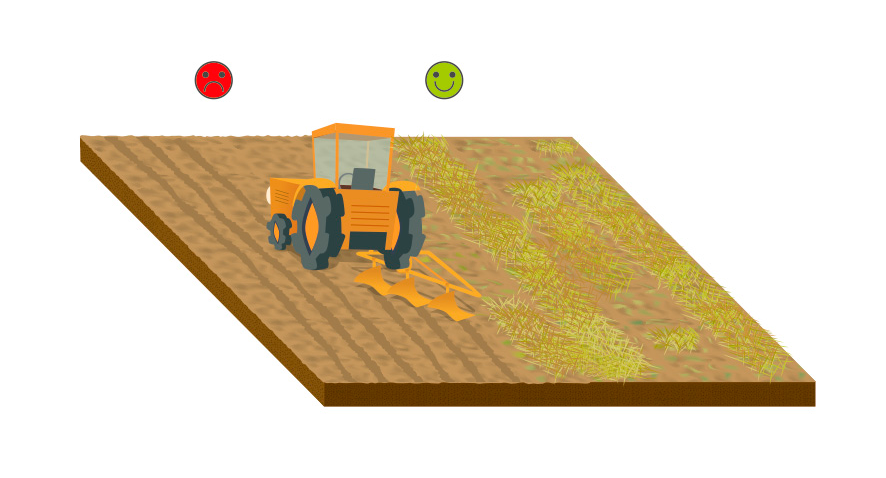1.- EBITDA
A different soil management will have a clear influence on the economy of the farm.
2.- EBITDA/labour unit
A different soil management will have a clear influence on the economy of the farm.
3.- Production costs
A different soil management will have a clear influence on the economy of the farm.
4.- Yield/ha UAA
Yields can change by implementing different soil management techniques.
5.- Yield/ ha main fodder area
Yields can change by implementing different soil management techniques.
7.- Effectiveness working time
A different soil management implies less working hours.
8.- SI – Satisfaction Index
The implementation of this BMP could have a positive influence on the farmer’s perception.
9.- Soil Tillage index
Minimum soil disturbance practices will have a lower grade of aggressiveness on soil.
11.- Organic matter level
The more intensive the tillage is, the more exposed to oxidation the soil is and, therefore, to the decrease of the organic matter level.
14.- Energy balance
The energy consumed (mainly) and produced in the farm will change when implementing this BMP.
16.- Water consumption
Due to the reduction of soil disturbance, soil structure is improved and its capacity to retain water, too.
21.- Biodiversity structures (nests, hives, spider webs, etc.) – habitats
The more intensive the tillage is, the more damaged the living organisms are.
23.- NO3 level – rivers
The risk of contamination in water streams by NO3 is linked to the soil management practices (also depending on the intensity of rainfall or irrigation).
24.- Use of PPPs in some farms close to water streams
The risk of contamination in water streams by PPPs is linked to the soil management techniques (also depending on the intensity of rainfall or irrigation).
25.- GHG level
The more intensive the tillage is the more exposed to oxidation the soil is and, therefore, to the increase of CO2 emissions. Furthermore, soil tillage implies fuel consumption, which increases the production of GHG.
